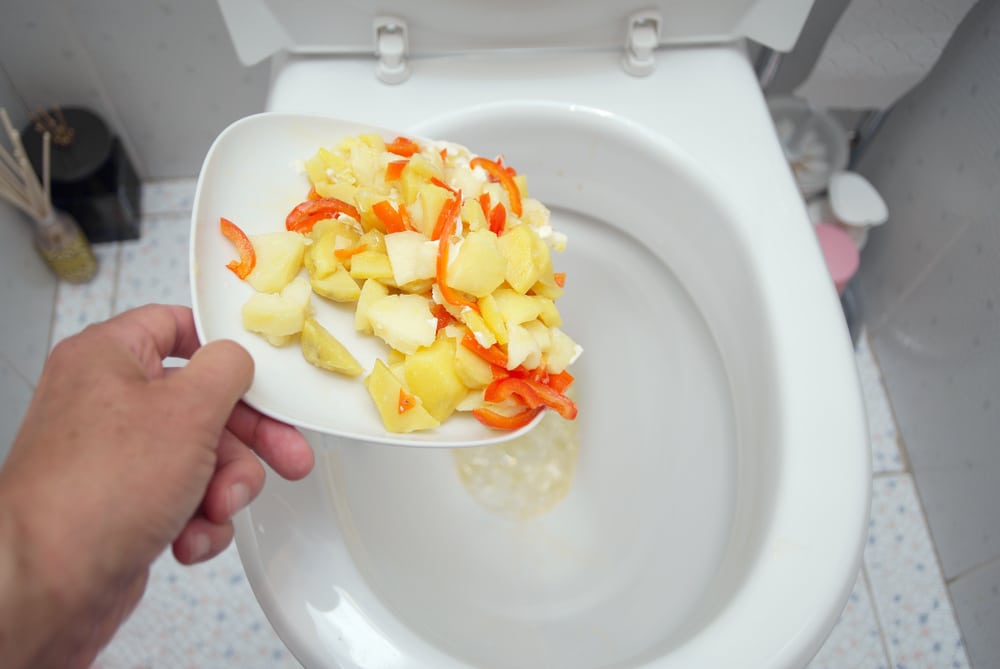Is it Advisable to Flush Food Down the Toilet?
Is it Advisable to Flush Food Down the Toilet?
Blog Article
The content down the page on the subject of Flushing Food Down the Toilet? is totally engaging. Check it out for yourself and figure out what you think of it.

Intro
Many individuals are typically faced with the problem of what to do with food waste, particularly when it comes to leftovers or scraps. One typical concern that arises is whether it's fine to flush food down the toilet. In this post, we'll look into the reasons why individuals could think about flushing food, the consequences of doing so, and different approaches for proper disposal.
Reasons individuals might consider flushing food
Lack of recognition
Some individuals may not understand the possible injury triggered by purging food down the bathroom. They might mistakenly think that it's a safe method.
Ease
Purging food down the toilet may seem like a quick and easy solution to disposing of unwanted scraps, specifically when there's no neighboring trash bin available.
Negligence
In some cases, people may merely pick to flush food out of sheer negligence, without considering the effects of their actions.
Effects of flushing food down the toilet
Ecological effect
Food waste that winds up in waterways can contribute to air pollution and injury aquatic ecological communities. Furthermore, the water used to flush food can strain water resources.
Plumbing concerns
Flushing food can cause blocked pipes and drains pipes, creating expensive pipes repairs and aggravations.
Kinds of food that ought to not be purged
Coarse foods
Foods with fibrous structures such as celery or corn husks can obtain tangled in pipelines and trigger clogs.
Starchy foods
Starchy foods like pasta and rice can soak up water and swell, resulting in obstructions in pipes.
Oils and fats
Greasy foods like bacon or cooking oils must never ever be purged down the bathroom as they can strengthen and trigger clogs.
Correct disposal techniques for food waste
Making use of a garbage disposal
For homes furnished with garbage disposals, food scraps can be ground up and purged via the plumbing system. Nonetheless, not all foods appropriate for disposal in this way.
Recycling
Certain food packaging materials can be recycled, lowering waste and reducing environmental effect.
Composting
Composting is an environmentally friendly method to get rid of food waste. Organic materials can be composted and used to enrich dirt for gardening.
The significance of appropriate waste monitoring
Lowering environmental damage
Proper waste monitoring methods, such as composting and recycling, help reduce contamination and maintain natural resources for future generations.
Protecting plumbing systems
By avoiding the practice of flushing food down the bathroom, home owners can protect against pricey plumbing repair work and keep the honesty of their plumbing systems.
Verdict
In conclusion, while it might be alluring to flush food down the toilet for comfort, it is necessary to recognize the possible effects of this action. By taking on proper waste administration methods and getting rid of food waste properly, people can contribute to much healthier pipes systems and a cleaner atmosphere for all.
FLUSH FOOD DOWN THE TOILET?
FLUSHING FOOD CAN CAUSE BLOCKED DRAINS IN YOUR HOME
All of the plumbing fixtures in your home are connected to the same sewer pipe outside of your home. This outdoor sewer pipe is responsible for transporting all the wastewater from your home to the Council sewer mains. Even small pieces of food that go down the kitchen sink can cause problems for your sewer. It should therefore be obvious that flushing larger bits of food, such as meat, risks a clog in either the toilet itself or the sewer pipes. Flushing greasy food is even more problematic because oil coagulates when it cools, coating the interior lining of your pipes.
THE TOILET IS NOT A BIN
Food isn’t the only thing that people shouldn’t be flushing down the toilet. People use the toilet to dispose of all kinds of things such as tampons, makeup wipes, dental floss, kitty litter and even underwear. Water goes to great lengths to educate residents about the high costs and stress placed on wastewater treatment systems simply from people flushing the wrong stuff down the toilet. It costs taxpayers millions of dollars each year, and homeowners thousands in blocked drain repairs.
FLUSHING FOOD IS A WASTE OF WATER
Flushing food is a waste of our most precious resource - water. In June this year Level 1 water restrictions were introduced to protect water supply from drought conditions. Much of New South Wales continues to be affected by prolonged drought with recent figures revealing up to 97 per cent of the state remains in drought. Depending on whether you have a single or dual flush toilet, every single flush uses between five and 11 litres of water. In the current climate this is a huge amount of water to be wasting on flushing food that should be placed in the bin (or better yet, the compost).
https://www.jabplumbingsolutions.com.au/blog/can-you-flush-food-down-the-toilet

Do you really like more info about ? Put feedback directly below. We'd be happy to find out your views about this entry. In hopes that you visit us again later on. Sharing is nice. You won't know, you might be doing someone a favor. We appreciate reading our article about Flushing Food Down the Toilet?.
Schedule Now! Report this page